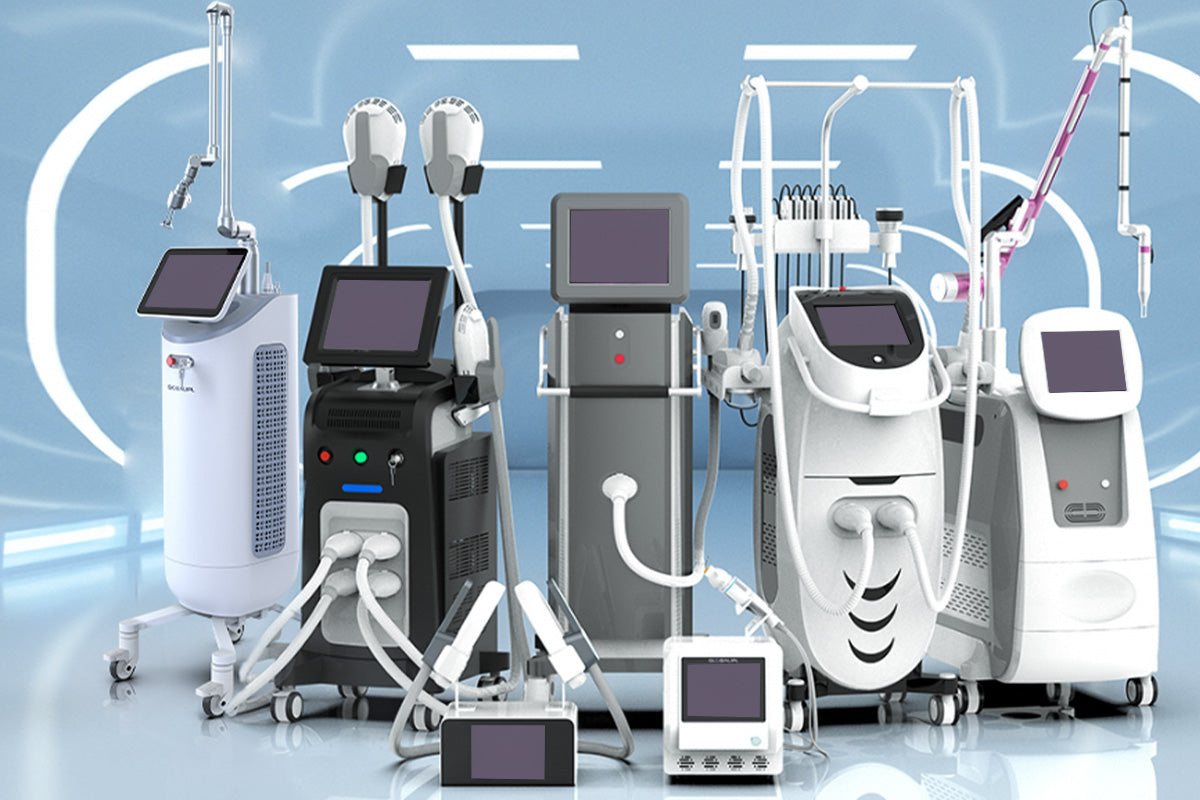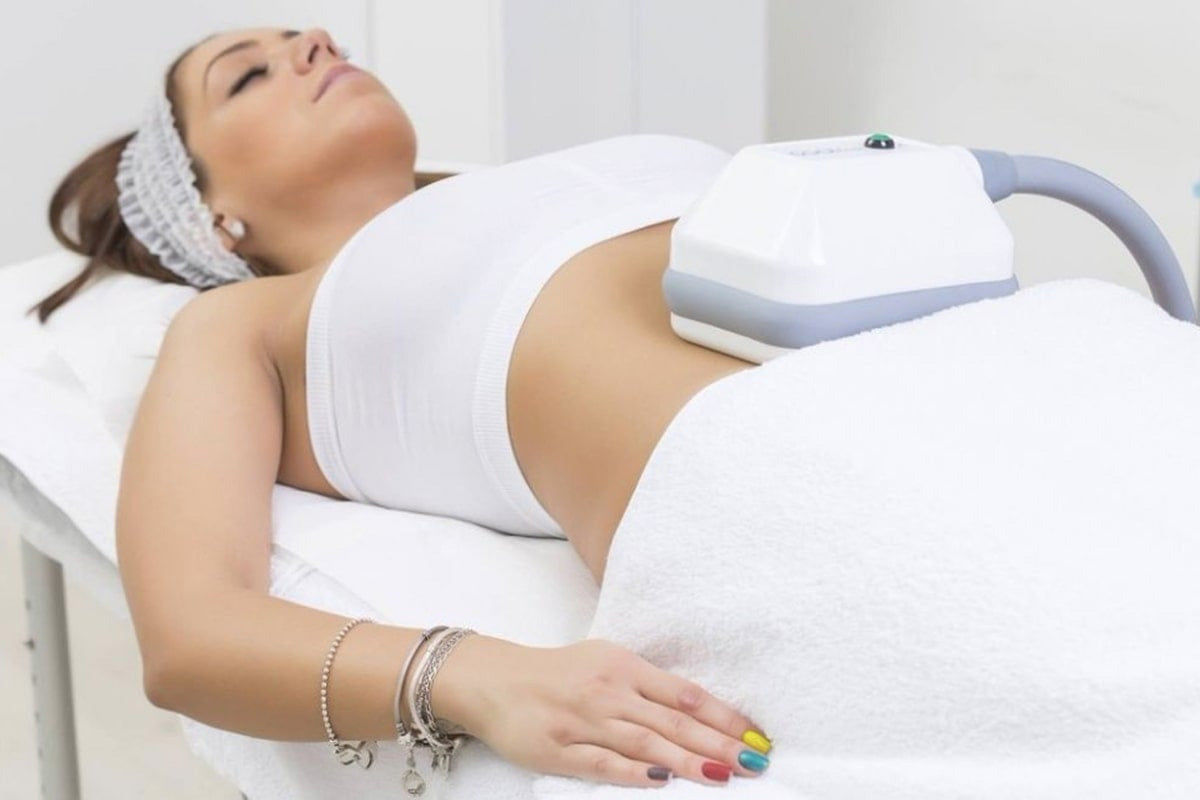
CO2 Fractional Laser therapy contributes to skin tightening and rejuvenation
Mechanism of Action:
Collagen Stimulation: The laser creates microscopic thermal injuries in the skin, triggering the body's natural healing process. This stimulates fibroblasts to produce new collagen and elastin.
Tissue Remodeling: As new collagen forms, it helps to restructure the skin from within, leading to improved firmness and elasticity.
Depth of Treatment:
CO2 lasers can penetrate deeper into the skin compared to many other laser types, allowing for more significant remodeling.
The fractional approach creates columns of treated tissue surrounded by untreated skin, promoting faster healing and allowing for deeper treatment.
Immediate vs. Long-term Effects:
Immediate tightening occurs due to heat-induced collagen contraction.
Long-term tightening and rejuvenation continue for several months as new collagen forms and skin remodels.
Areas of Treatment:
Face: Particularly effective for perioral (around the mouth) and periorbital (around the eyes) areas.
Neck: Can help with mild to moderate neck laxity.
Décolletage: Improves chest skin texture and tightness.
Hands: Rejuvenates the appearance of aging hands.
Customization for Tightening:
Energy levels and density settings can be adjusted to target specific depths and achieve desired tightening effects.
Multiple passes or sessions may be used for enhanced tightening results.
Combination with Other Modalities:
Often combined with radiofrequency treatments for enhanced tightening effects.
May be used in conjunction with injectables like fillers for comprehensive rejuvenation.
Quantifiable Results:
Studies have shown measurable improvements in skin elasticity and firmness using devices like cutometers.
Ultrasound imaging can demonstrate increases in dermal thickness post-treatment.
Factors Affecting Tightening Results:
Age and skin condition pre-treatment
Lifestyle factors (sun exposure, smoking, diet)
Adherence to post-treatment care instructions
Rejuvenation Beyond Tightening:
Improved skin texture and tone
Reduction in pore size
Evens out pigmentation irregularities
Softens fine lines and wrinkles
Timeline of Rejuvenation:
Initial results visible once swelling subsides (about 1-2 weeks)
Continued improvement over 3-6 months as collagen remodeling occurs
Results can last 2-5 years, depending on individual factors and maintenance
Maintenance of Results:
Proper skincare routine, including sun protection
Periodic "touch-up" treatments may be recommended (typically annually)
Complementary treatments like chemical peels or microneedling can help maintain results
Patient Satisfaction:
Generally high satisfaction rates reported in clinical studies
Many patients report a more youthful, refreshed appearance

Limitations:
While effective, it cannot replicate the results of surgical facelifts for severe skin laxity
Multiple treatments may be necessary for optimal results in some cases
Recent Advancements:
Newer protocols combining different laser wavelengths or energy-based devices for enhanced tightening
Development of more comfortable treatment options with less downtime
CO2 Fractional Laser therapy remains one of the most effective non-surgical options for skin tightening and rejuvenation. Its ability to stimulate the body's natural collagen production leads to improvements that continue well beyond the initial treatment period.
However, it's important for patients to have realistic expectations and understand that results can vary based on individual factors.
Collagen Stimulation: The laser creates microscopic thermal injuries in the skin, triggering the body's natural healing process. This stimulates fibroblasts to produce new collagen and elastin.
Tissue Remodeling: As new collagen forms, it helps to restructure the skin from within, leading to improved firmness and elasticity.
Depth of Treatment:
CO2 lasers can penetrate deeper into the skin compared to many other laser types, allowing for more significant remodeling.
The fractional approach creates columns of treated tissue surrounded by untreated skin, promoting faster healing and allowing for deeper treatment.
Immediate vs. Long-term Effects:
Immediate tightening occurs due to heat-induced collagen contraction.
Long-term tightening and rejuvenation continue for several months as new collagen forms and skin remodels.
Areas of Treatment:
Face: Particularly effective for perioral (around the mouth) and periorbital (around the eyes) areas.
Neck: Can help with mild to moderate neck laxity.
Décolletage: Improves chest skin texture and tightness.
Hands: Rejuvenates the appearance of aging hands.
Customization for Tightening:
Energy levels and density settings can be adjusted to target specific depths and achieve desired tightening effects.
Multiple passes or sessions may be used for enhanced tightening results.
Combination with Other Modalities:
Often combined with radiofrequency treatments for enhanced tightening effects.
May be used in conjunction with injectables like fillers for comprehensive rejuvenation.
Quantifiable Results:
Studies have shown measurable improvements in skin elasticity and firmness using devices like cutometers.
Ultrasound imaging can demonstrate increases in dermal thickness post-treatment.
Factors Affecting Tightening Results:
Age and skin condition pre-treatment
Lifestyle factors (sun exposure, smoking, diet)
Adherence to post-treatment care instructions
Rejuvenation Beyond Tightening:
Improved skin texture and tone
Reduction in pore size
Evens out pigmentation irregularities
Softens fine lines and wrinkles
Timeline of Rejuvenation:
Initial results visible once swelling subsides (about 1-2 weeks)
Continued improvement over 3-6 months as collagen remodeling occurs
Results can last 2-5 years, depending on individual factors and maintenance
Maintenance of Results:
Proper skincare routine, including sun protection
Periodic "touch-up" treatments may be recommended (typically annually)
Complementary treatments like chemical peels or microneedling can help maintain results
Patient Satisfaction:
Generally high satisfaction rates reported in clinical studies
Many patients report a more youthful, refreshed appearance

Limitations:
While effective, it cannot replicate the results of surgical facelifts for severe skin laxity
Multiple treatments may be necessary for optimal results in some cases
Recent Advancements:
Newer protocols combining different laser wavelengths or energy-based devices for enhanced tightening
Development of more comfortable treatment options with less downtime
CO2 Fractional Laser therapy remains one of the most effective non-surgical options for skin tightening and rejuvenation. Its ability to stimulate the body's natural collagen production leads to improvements that continue well beyond the initial treatment period.
However, it's important for patients to have realistic expectations and understand that results can vary based on individual factors.
Previous post
EMS (Electrical Muscle Stimulation) technology
Next post





